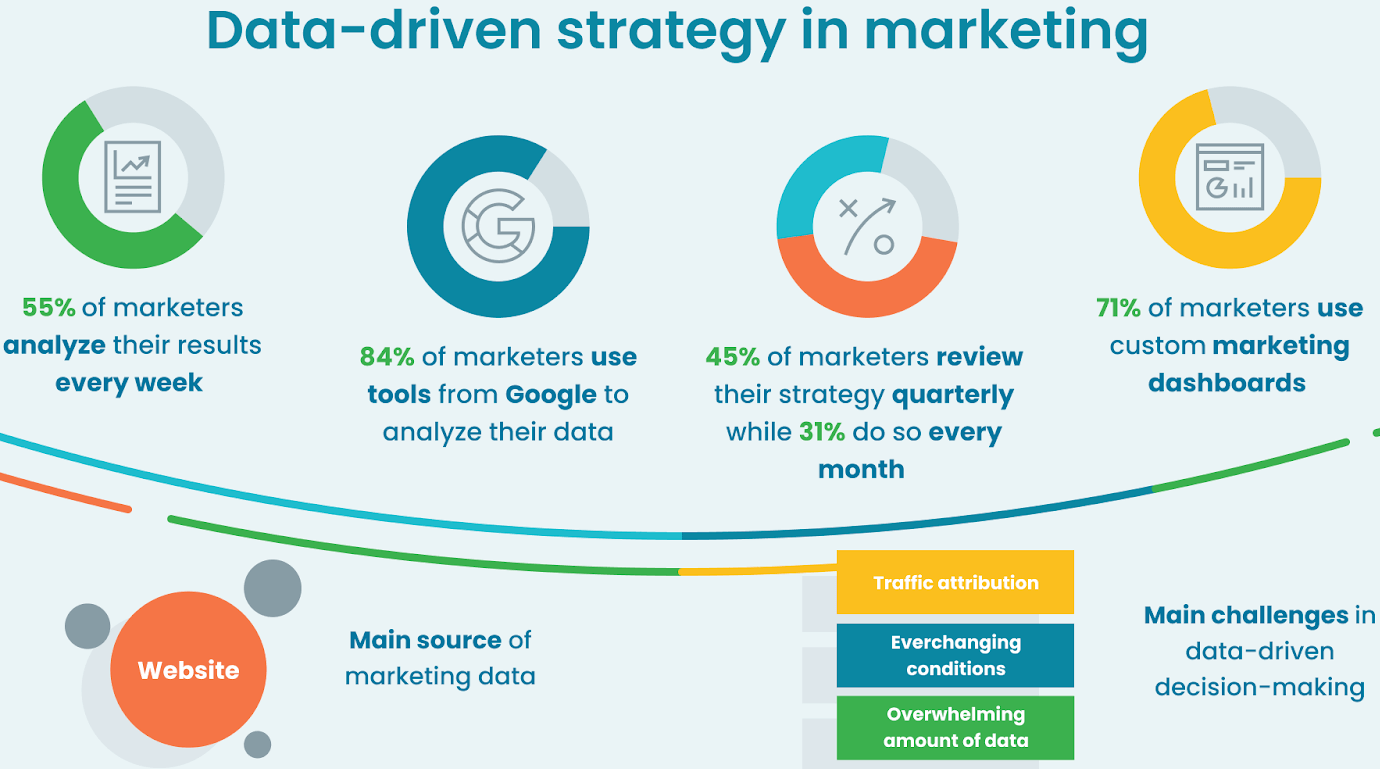In today’s data-driven business landscape, organizations are increasingly leveraging the power of customer relationship management (CRM) data analytics to make informed decisions that drive growth and success. CRM data holds a wealth of valuable insights into customer behavior, preferences, and interactions, offering businesses a comprehensive view of their customers. By harnessing the power of data analytics, organizations can uncover hidden patterns, identify trends, and gain actionable insights that empower them to optimize their strategies and make data-driven decisions. This article explores the transformative potential of CRM data analytics, providing practical insights and case studies that demonstrate its ability to revolutionize business decision-making.
Harnessing the Power of CRM Data Analytics for Smarter Business Decisions
Gaining Deeper Customer Insights
CRM data analytics allows businesses to gain a deeper understanding of their customers. By analyzing customer interactions, purchase history, and demographics, businesses can identify customer needs and preferences. This data can be used to personalize marketing campaigns, improve customer service, and develop new products and services that resonate with their target audience.
Optimizing Marketing Strategies
CRM data analytics empowers businesses to optimize their marketing strategies by identifying the most effective channels, targeting the right audience, and measuring campaign performance. Businesses can analyze customer responses to marketing campaigns, track conversion rates, and identify opportunities to improve their marketing ROI.
Improving Customer Retention and Loyalty
CRM data analytics helps businesses understand customer churn, identify factors contributing to customer attrition, and develop strategies to improve customer retention and loyalty. By analyzing customer behavior and identifying at-risk customers, businesses can intervene early to address concerns and prevent customer churn.
Unlocking Business Potential: How CRM Data Analytics Drives Smarter Decisions
Understanding Customer Behavior and Preferences
CRM data analytics helps businesses understand customer behavior and preferences in detail. By analyzing data on customer interactions, purchases, website visits, and social media activity, companies gain insights into what motivates customers, their buying habits, and their pain points. This information allows businesses to tailor their marketing campaigns, product development, and customer service strategies to better meet customer needs and expectations.
Personalized Customer Experiences
Personalized customer experiences are a key driver of customer satisfaction and loyalty. CRM data analytics enables businesses to deliver highly personalized experiences by leveraging data on individual customer preferences, past interactions, and purchase history. This can involve recommending relevant products, offering targeted promotions, and providing tailored customer support.
Optimizing Sales and Marketing Efforts
CRM data analytics provides valuable insights into sales and marketing performance. By analyzing data on leads, conversions, and customer lifetime value, businesses can identify successful strategies, track campaign effectiveness, and allocate resources more efficiently. This allows businesses to optimize their sales and marketing efforts for maximum return on investment.
Improving Customer Service and Retention
Customer service is a critical aspect of customer satisfaction and retention. CRM data analytics helps businesses identify and address customer issues promptly. By analyzing data on customer complaints, support tickets, and feedback, businesses can proactively identify areas for improvement in their customer service processes. This enables them to provide more efficient and effective customer support, reducing churn and improving customer loyalty.
Predicting Customer Churn and Identifying Opportunities
Predictive analytics, a powerful application of CRM data analytics, helps businesses identify customers at risk of churn and predict future customer behavior. By analyzing historical data on customer interactions and purchase patterns, businesses can identify early warning signs of customer dissatisfaction and implement targeted interventions to retain valuable customers. Moreover, predictive analytics can help businesses identify potential opportunities for growth by identifying customer segments with high growth potential.
Frequent questions
What is CRM data analytics and how does it improve business decisions?
CRM data analytics is the process of collecting, analyzing, and interpreting data from your CRM system to gain insights into customer behavior, preferences, and needs. This data can be used to improve a variety of business decisions, such as:
- Targeting marketing campaigns to the right customers.
- Personalizing the customer experience.
- Optimizing sales processes.
- Improving customer service.
- Identifying new business opportunities.
By analyzing CRM data, businesses can gain a deeper understanding of their customers and make more informed decisions that lead to improved business outcomes.
What are some examples of how CRM data analytics can be used to improve business decisions?
Here are a few examples of how CRM data analytics can be used to improve business decisions:
- Targeted marketing: A company can use CRM data to identify customers who are most likely to be interested in a new product or service. This data can then be used to target marketing campaigns to these customers, increasing the likelihood of success.
- Personalized customer experience: A company can use CRM data to personalize the customer experience by providing customers with relevant content, offers, and support. For example, a company could send emails to customers with personalized recommendations based on their past purchases.
- Optimized sales processes: A company can use CRM data to identify which sales tactics are most effective and which leads are most likely to convert. This data can then be used to optimize sales processes and improve sales performance.
- Improved customer service: A company can use CRM data to track customer service interactions and identify areas where improvement is needed. This data can then be used to improve customer service processes and increase customer satisfaction.
- Identifying new business opportunities: A company can use CRM data to identify new business opportunities, such as new product ideas or new markets to enter. This data can then be used to develop new products and services or expand into new markets.
These are just a few examples of how CRM data analytics can be used to improve business decisions. There are many other ways that CRM data can be used to gain valuable insights and drive business success.
What are some of the challenges of using CRM data analytics?
While CRM data analytics can be a powerful tool for improving business decisions, there are also some challenges that businesses need to be aware of. These challenges include:
- Data quality: The quality of CRM data is crucial for accurate and reliable insights. Businesses need to ensure that their data is clean, accurate, and complete. Poor data quality can lead to inaccurate insights and poor decision-making.
- Data security: CRM data often contains sensitive customer information, so it’s important to protect this data from unauthorized access. Businesses need to implement strong security measures to protect their CRM data.
- Data analysis skills: Analyzing CRM data requires specialized skills and knowledge. Businesses need to invest in training and development to ensure that their employees have the skills they need to effectively analyze CRM data.
- Data integration: CRM data is often stored in multiple systems, which can make it difficult to integrate and analyze. Businesses need to find ways to integrate their CRM data with other data sources to get a complete picture of their customers.
By overcoming these challenges, businesses can maximize the benefits of CRM data analytics and make more informed decisions that drive business growth.
What are some best practices for using CRM data analytics?
Here are some best practices for using CRM data analytics to improve business decisions:
- Define your goals: Before you start analyzing CRM data, it’s important to define your goals. What are you hoping to achieve with this data? By defining your goals, you can ensure that you are collecting and analyzing the right data.
- Focus on the right metrics: There are many different metrics that you can track in your CRM system. Focus on the metrics that are most relevant to your goals. For example, if your goal is to increase sales, you might focus on metrics such as lead conversion rate and average deal size.
- Use the right tools: There are a variety of tools available for analyzing CRM data. Choose the tools that are best suited for your needs and your skill level.
- Don’t rely solely on data: Data can be helpful, but it’s important to remember that it’s only part of the story. You should also consider other factors, such as your intuition and your understanding of your customers.
- Act on your insights: Once you have gained insights from your CRM data, it’s important to act on them. Use these insights to make improvements to your business processes, marketing campaigns, and customer service.
By following these best practices, you can make the most of your CRM data and use it to drive business growth and success.


